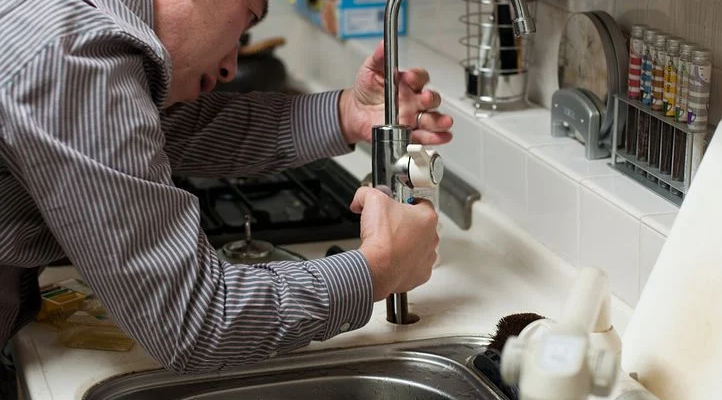The publisher is making a few great pointers related to When to DIY and When to Call a Professional Plumber in general in the content underneath.

Intro
Pipes issues can vary from minor aggravations to significant headaches, usually motivating house owners to choose in between taking on the issue themselves or employing an expert plumbing professional. Understanding when to do it yourself and when to seek specialist help can save time, cash, and prevent potential calamities. This write-up checks out the aspects to consider when making this critical decision.
Benefits of Do It Yourself Pipes
Tackling plumbing jobs yourself can be fulfilling in several means, especially for less complex tasks.
Intricacy of Jobs
Some pipes concerns need specialized understanding and devices beyond common home owner capabilities. Mishandling complex problems can result in more damages and pricey fixings.
Safety and security Worries
Working with plumbing systems entails risks such as exposure to water damage, capacity for electrical threats, and handling tools inaccurately. Safety and security safety measures should be observed to stop mishaps and make sure effective fixings.
Indicators to Call a Professional Plumbing Professional
Identifying when a pipes problem exceeds do it yourself capabilities is crucial to stop intensifying issues.
Indications of Complicated Issues
Instances include:
Prompt expert treatment is needed to attend to these problems efficiently and lessen damages.
Do It Yourself Pipes Tips
For effective DIY plumbing, it's important to be prepared with the right devices and follow proper procedures.
Standard Devices and Products
Key devices for do it yourself plumbing:
Step-by-Step Guides
Clear guidelines guarantee safe and effective do it yourself repairs:
Choosing the Correct Time to DIY
Figuring out when to take on pipes tasks on your own calls for evaluating both the intricacy of the concern and personal convenience degrees.
Analysis Checklist
Take into consideration:
Price Cost savings
Do it yourself pipes tasks frequently conserve cash by staying clear of expert service fees. Jobs like repairing minor leaks, replacing taps, or setting up new showerheads are instances where home owners can manage repairs without employing a plumber.
Skill Enhancement
Participating in do it yourself plumbing supplies a possibility to find out and boost useful skills. Standard tasks empower house owners to comprehend their plumbing systems better and acquire confidence in handling tiny repairs independently.
Risks of Do It Yourself Plumbing
While DIY tasks supply advantages, certain risks ought to be thoroughly considered prior to trying repair work.
When to Certainly Call a Specialist
Certain scenarios demand immediate skilled attention to stop considerable damage or security dangers.
Emergency situation Scenarios
Examples consist of:
Finding and Hiring a Professional Plumbing Professional
Picking a qualified plumbing ensures reputable service and assurance in dealing with plumbing problems.
Criteria for Choice
Aspects to take into consideration:
Price Analysis: DIY vs. Professional Providers
Contrasting the financial ramifications of do it yourself initiatives versus specialist pipes solutions helps in making educated choices.
Financial Considerations
Assess:
Verdict
Choosing whether to do it yourself or call a professional plumbing professional rests on comprehending the intricacy of pipes concerns and individual abilities. By considering the benefits and threats, home owners can make enlightened choices that advertise effective upkeep and guard their homes from pipes disasters.
DIY vs. Professional Plumbing Repairs: When to Call a Pro
When dealing with plumbing issues or embarking on renovation projects, homeowners have to decide whether or not they want professional help with their home’s plumbing system. While master plumbers can complete just about any plumbing project, they can cost a pretty penny. On the other hand, DIY plumbing projects can very quickly go awry, which can make things worse.
In this blog, we’ll explore common plumbing projects that homeowners can confidently tackle, provide insights into the essential tools needed, and discuss critical DIY mistakes to avoid. Understanding these distinctions not only helps in maintaining the efficiency and longevity of your home’s plumbing system but also ensures safety and cost-effectiveness in your repair endeavors.
Installing/Replacing Certain Plumbing Fixtures
Most homeowners should be able to install new plumbing fixtures or replace old ones that are damaged or old. Using basic tools, you should be able to effectively:
Replace faucet washers or cartridges Replace showerheads Install a new toilet seat Hook up new appliances Replace hose bibbs Unclogging Drains
You should also be able to fix any clogged drains within your home by using a plunger, plumber’s snake, or natural solutions like baking soda and vinegar. These can often clear clogged sinks or bathtubs without needing professional drain cleaning assistance.
Fixing Running Toilets
Another plumbing issue many homeowners may be able to handle is a running toilet. Toilets may run more than they should due to a faulty flapper or float inside the tank. Toilet replacement parts are easy to find and often come with easy-to-follow instructions.
Repairing Leaky Faucets
A dripping faucet can not only be an annoyance, but it can also be a waste of water. Leaky faucets can normally be fixed with basic tools and a basic understanding of how they work, making them easy to fix.
Adjusting Water Heater Temperature
If you are able to follow basic safety precautions, you should be able to adjust the temperature on your hot water heater, which can improve your home’s energy efficiency and also increase comfort.
Fixing Minor Leaks in Pipes
For small plumbing leaks, particularly ones at pipe joints, using plumbing tape or a patch kit can be a temporary fix while you decide on a more permanent solution. Repairing broken pipes, however, can be more difficult and may require professional attention.

We hope you liked our topic on DIY vs. Professional Plumbing Repairs: When to Call a Pro. Thanks for taking a few minutes to read through our content. Please set aside a second to share this content if you enjoyed it. We appreciate your readership.
Appointment